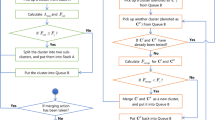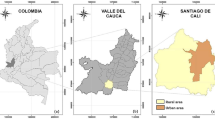Abstract.
The present paper deals with the application of several chemometrical methods (cluster and principal components analysis, source apportioning on absolute principal components scores) to an aerosol data collection from Unterloibach, Austria. It is shown that seven latent factors explaining almost 80% of the total variance are responsible for the data structure and are conditionally identified as “secondary aerosol”, “mineral dust”, “oil burning”, “lead smelter”, “coal burning”, “salt” and “fertilizer” emission sources. Furthermore, the contribution of each identified source to the formation of the particle total mass and chemical compounds total concentration is calculated. Thus, a reliable assessment of the air quality in the region is performed. The requirements of the sustainability concept for ecological indicators in this case is easily transformed into a multivariate statistical problem taking into account not separate indicators but the specific multivariate nature of aerosol pollution.
Similar content being viewed by others
Author information
Authors and Affiliations
Corresponding author
Rights and permissions
About this article
Cite this article
Simeonov, V., Tsakovski, S., Lavric, T. et al. Multivariate Statistical Assessment of Air Quality: A Case Study. Microchim. Acta 148, 293–298 (2004). https://doi.org/10.1007/s00604-004-0279-2
Received:
Accepted:
Published:
Issue Date:
DOI: https://doi.org/10.1007/s00604-004-0279-2




